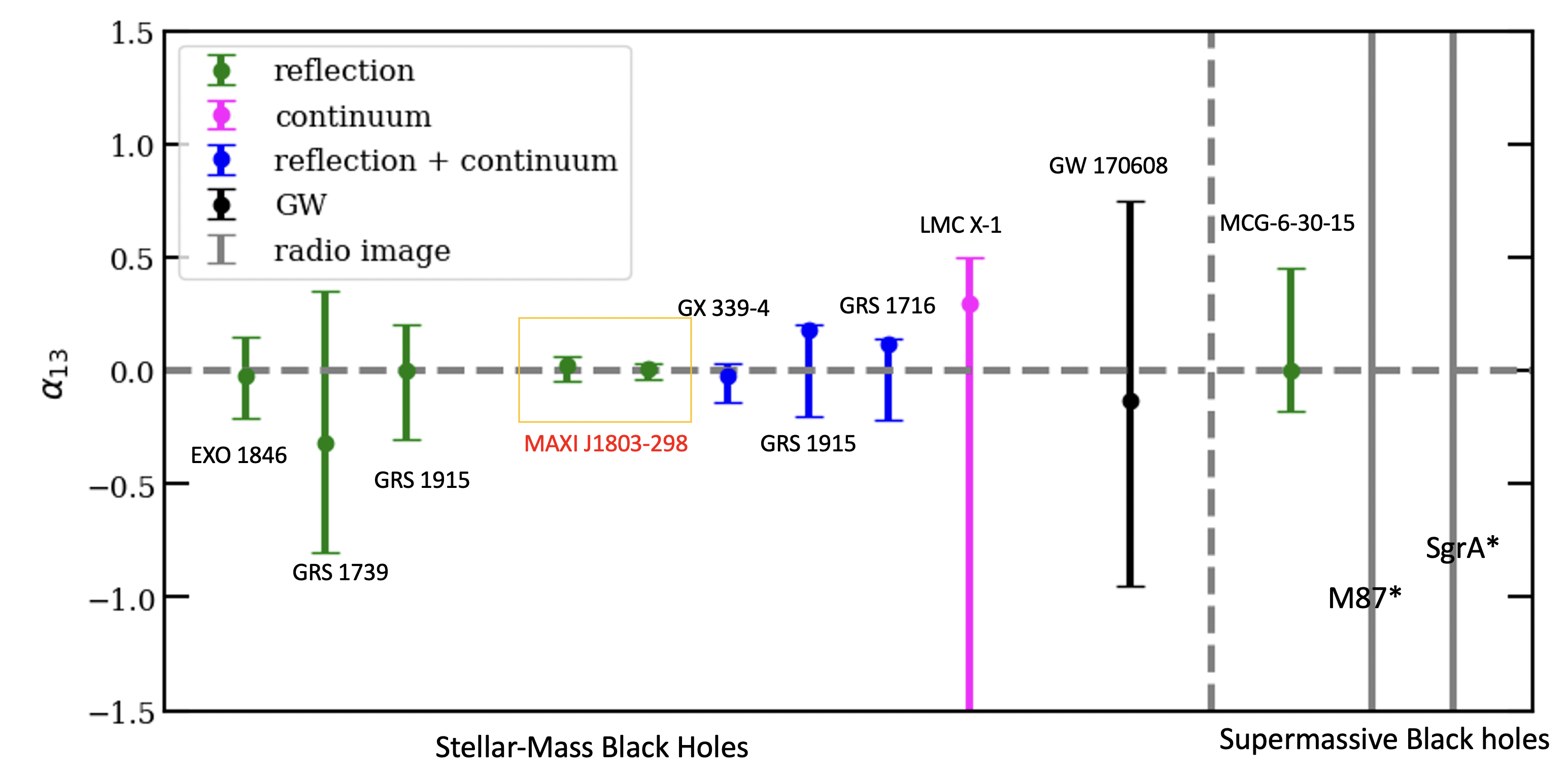In recent years, the study of black holes and the verification of the Kerr spacetime hypothesis have garnered significant attention within the astrophysics community. Various observational methods have been employed to investigate the strong gravitational field regions around black holes, such as gravitational waves, Event Horizon Telescope (EHT) black hole shadow imaging, and multi-band analysis of dynamic properties surrounding black holes, all aimed at verifying predictions of general relativity. The primary research focus and challenge currently lie in determining the accuracy with which Kerr spacetime around black holes can be tested.
Under the supervision of Prof. CUI Lang from the AGN research group at the Xinjiang Astronomical Observatory (XAO) of the Chinese Academy of Sciences (CAS), LIAO Jie, a graduate student, successfully utilized the reflection spectrum model relxill under the Kerr metric and the model relxill_nk under the Johannsen metric to analyze and fit the X-ray data of the stellar black hole candidate MAXI J1803-298 from the NuSTAR and NICER satellites. Their analysis provided constraints on fundamental parameters, including the black hole spin, inclination angle, and deformation parameter α13.
The relevant results were published in The Astrophysical Journal in May 2024 (ApJ, 2024, 967, 35).
In this study, a bottom-up approach was employed to test the Kerr spacetime of black holes. This approach assumes that the spacetime metric around the black hole can be described by the Johannsen metric. When the deformation parameter within this metric is strictly constrained to zero, the Johannsen metric reduces to the Kerr metric. Initially, the researchers fitted the X-ray data using a multi-temperature blackbody spectrum model and a power-law spectrum model, incorporating absorption by galactic interstellar medium.
The residuals represent the X-ray reflection spectrum generated by seed photons near the innermost stable circular orbit of the black hole accretion disk, scattered through the corona. The reflection spectrum model relxill_nk was then used to constrain the deformation parameters within the model. At a 3-σ confidence level, the researchers constrained the deformation parameter α13,  and
and  with the highest precise to date, using the best-fit models relxillD_nk and relxillion_nk, respectively.
with the highest precise to date, using the best-fit models relxillD_nk and relxillion_nk, respectively.
Additionally, the researchers suggested that the quenching of black hole jet activity in the soft intermediate state could be a key factor influencing the constraint on the deformation parameter α13. This may be related to the stability of the corona, although the physical mechanism behind this requires further investigation.
This result provides the highest precision limit in the world for the statistical error of the deformation parameter α13, which is about an order of magnitude higher than existing results.

Figure 1: Constraints on the spin and deformation parameter α13 of the black hole MAXI J1803-298 using different reflection spectrum models.

Figure 2: The comparisons of the deformation parameter α13 derived from various methods and sources.
Contact: Jie Liao, Lang Cui
Xinjiang Astronomical Observatory, Chinese Academy of Sciences
Email: liaojie@xao.ac.cn, cuilang@xao.ac.cn
Article link:https://iopscience.iop.org/article/10.3847/1538-4357/ad3c2b